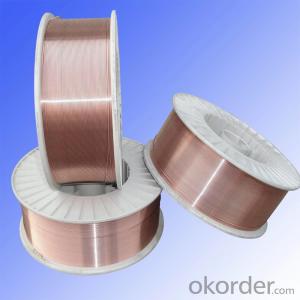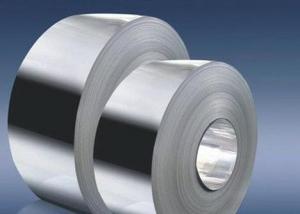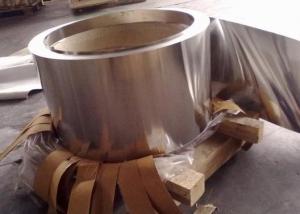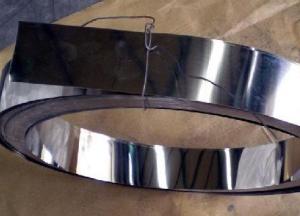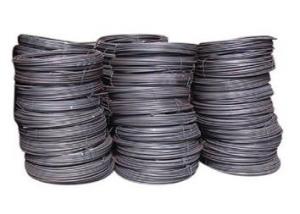Brass Steel Welding Wire/ Strip for Construction
- Loading Port:
- Qingdao
- Payment Terms:
- TT or LC
- Min Order Qty:
- 10 m.t.
- Supply Capability:
- 1000 m.t./month
OKorder Service Pledge
OKorder Financial Service
You Might Also Like
Brass Steel Welding Wire/ Strip for Construction
Main Structure for Brass Steel Welding Wire/Strip
AWS A5.18 ER70S-6
1) Copper coated
2) All position welding
3) Shield gas : CO2
4)Material: Carbon Steel
5)Diameter: 0.8mm-1.6mm
6)Weight: 15kg/spool, 100kg/barrel, 250kg/barrel
7)Flux Content: Without flux
8)Shield GAS: CO2
ER70S-6 is a coppered low alloy steel wire with all position welding.The wire has a very good welding performance and the weld metal shows lower temperature impact toughness. It is mainly for butt and fillet welding structures made by shipping steel and low alloy steel, such as ships , containers, as well as vehicles,engineering and construction machineries, bridges etc.
Datas of Brass Steel Welding Wire/ Strip for Construction:
C | Mn | Si | S | P | Ni | Cr | Mo | V | Cu | |
Standard | 0.06-0.15 | 1.40-1.85 | 0.80-1.15 | ≤0.035 | ≤0.025 | ≤0.15 | ≤0.15 | ≤0.15 | ≤0.03 | ≤0.50 |
Typical | 0.078 | 1.53 | 0.85 | 0.01 | 0.011 | 0.029 | 0.022 | 0.008 | 0.010 | 0.12 |
All products of welding wire were produced by German equipment.
Advanced technologies with advanced equipment.
Main Features for Brass Steel Welding Wire/ Strip for Construction:
Gas-shielded welding wires utilize Co2,argon-rich gas and argon gas as the shielding gases with high production efficiency.Large current may be used during welding to achieve droplet transfer,wiht large melting coefficient of wire, excellent depth of welding penetration on material, little melting residues,high-density current, concentrated heat, small heating area, little distortion of work pieces after welding, etc.
Because of low content of hydrogen in the seam,cold cracking is rare. Good visibility of electric arc facilitates full-position welding and welding at other positions.
Main Applications for Brass Steel Welding Wire/ Strip for Construction:
Welding of various 500Mpa structural steel components;welding of various 500Mpa plates and pipes;full-position welding with a wide range of current.
FAQ:
Why Should You Choose Us?
One-stop purchase service with full set of production line to save your time, cost and energy
Competitive price,Superior quality, Excellent logsitics and Strong finance ability
Professional service team
Picture:
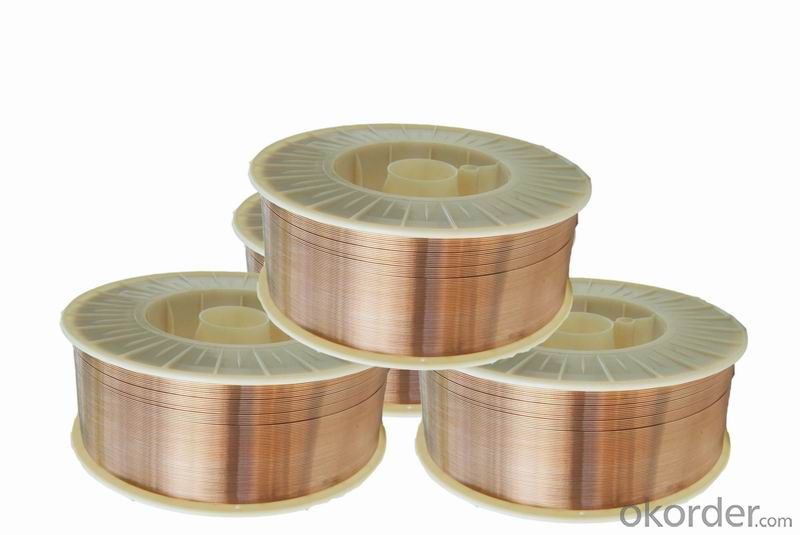
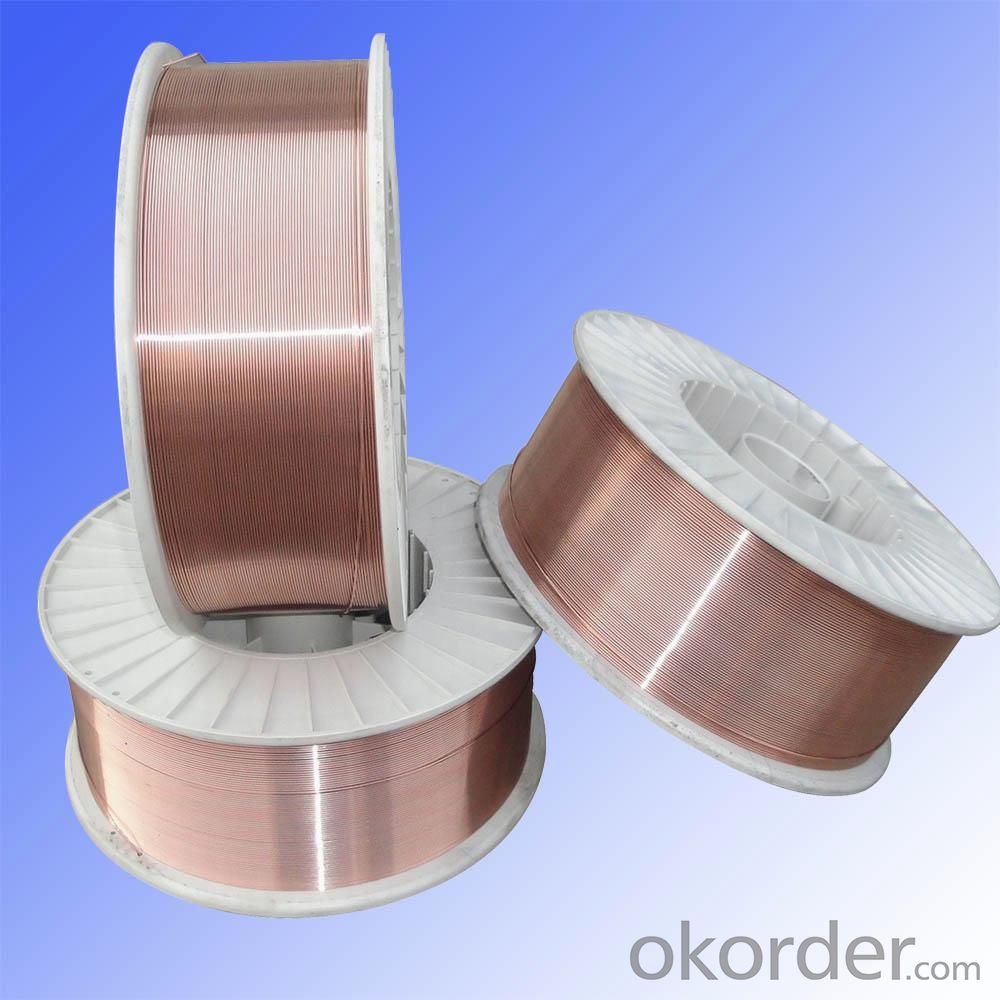
- Q:What are the different types of stainless steel wire rope connectors?
- There are several types of stainless steel wire rope connectors, including thimbles, swage sleeves, swage studs, turnbuckles, shackles, and quick links. These connectors are used to secure and connect wire ropes in various applications.
- Q:How to distinguish between 302 stainless steel screws and 304 stainless steel screws?
- 302 stainless steel and 304 stainless steel are suitable for food processing, storage and transportation. It has good processability and weldability. Plate type heat exchanger, corrugated pipe, household appliances (1, 2 kinds of tableware, kitchen cabinet, indoor pipeline, water heater, boiler, bath), auto parts (windshield wiper, muffler, mold), medical appliances, building materials, chemical, food industry, agriculture, marine parts, millet mobile phone etc.. 304 stainless steel is a nationally recognized food grade stainless steel.
- Q:Can stainless steel wire be used for medical instruments?
- Yes, stainless steel wire can be used for medical instruments. Stainless steel is a widely used material in the medical field due to its excellent corrosion resistance, strength, and durability. It is often used for surgical instruments, orthopedic implants, and various medical devices.
- Q:Is stainless steel wire resistant to bending?
- Yes, stainless steel wire is resistant to bending. Stainless steel is a highly durable and strong material that has excellent resistance to deformation under stress. It has a high tensile strength, which means it can withstand significant bending forces without permanently deforming or breaking. This makes stainless steel wire ideal for applications where bending or shaping is required, such as in construction, manufacturing, and various industrial processes. Additionally, stainless steel wire also maintains its resistance to bending even in extreme temperatures, making it a versatile and reliable material for a wide range of applications.
- Q:Can stainless steel wire be used for springs?
- Yes, stainless steel wire can be used for springs.
- Q:Stainless steel plate surface treatment: ink, wire drawing, polishing what does that mean? How?
- Oil mill, also known as "snow wire", "broken wire", is a kind of anti fingerprint drawing, used in the elevator car. It is the use of 4# wire drawing machine grinding, with grease to reduce the temperature generated by the board, so that the surface of the board to maintain smooth, non deformation
- Q:TIG welding of stainless steel weld why blue
- Argon arc welding is a welding technique using argon as protective gas when welding stainless steel. Also called argon gas shielded welding. That is, argon shielded gas is applied around the arc welding, and the air is separated from the welding zone to prevent the oxidation of the welding zone.
- Q:How is stainless steel wire different from carbon steel wire?
- The composition, properties, and applications of stainless steel wire and carbon steel wire vary. In terms of composition, stainless steel wire contains iron, chromium, and nickel, while carbon steel wire mainly consists of iron and carbon. This difference in composition results in stainless steel wire having corrosion-resistant properties, making it suitable for applications exposed to moisture or chemicals. Conversely, carbon steel wire is less resistant to corrosion and is typically used in applications where strength and toughness are the main requirements. Regarding properties, stainless steel wire has higher tensile strength and greater ductility compared to carbon steel wire. This means that stainless steel wire can endure higher levels of stress and deformation before breaking. Additionally, stainless steel wire has a higher melting point, making it more resistant to heat than carbon steel wire. The applications for stainless steel wire are extensive and diverse, finding use in industries like construction, automotive, aerospace, and medical, where corrosion resistance and strength are highly valued. Stainless steel wire is also commonly utilized in the production of various household items, kitchenware, and jewelry due to its attractive appearance and durability. On the other hand, carbon steel wire is frequently employed in applications that necessitate high strength and durability but do not require corrosion resistance. It is commonly utilized in the manufacturing of springs, wires for fences, nails, and general-purpose fasteners. In conclusion, stainless steel wire and carbon steel wire differ in terms of composition, properties, and applications. Stainless steel wire offers superior corrosion resistance, higher tensile strength, and increased heat resistance, making it ideal for applications that necessitate these qualities. Conversely, carbon steel wire is recognized for its strength and durability, commonly used in applications where corrosion resistance is not a primary concern.
- Q:Is stainless steel wire resistant to chemical exposure?
- Stainless steel wire exhibits a high level of resistance against chemical exposure. Its remarkable ability to resist corrosion is well-known, rendering it suitable for a wide range of applications involving contact with diverse chemicals. A protective oxide layer naturally forms on the surface of stainless steel, effectively preventing the wire from reacting with chemicals and undergoing corrosion. The remarkable resistance to chemical exposure makes stainless steel wire the preferred choice in various industries, including chemical processing, pharmaceuticals, food and beverage, among others. Nonetheless, it is vital to acknowledge that the resistance of stainless steel to specific chemicals can be influenced by its grade and composition. Therefore, it is crucial to carefully select the appropriate stainless steel grade, taking into account the type of chemical exposure it will encounter.
- Q:Can stainless steel wire be used for wire mesh conveyor belts?
- Indeed, wire mesh conveyor belts can be fabricated using stainless steel wire. The utilization of stainless steel wire is widely favored in the production of conveyor belts owing to its exceptional attributes such as remarkable strength, resistance to corrosion, and long-lasting nature. Moreover, it exhibits the capability to endure high temperatures and can be effortlessly cleansed, rendering it appropriate for an array of industries encompassing food processing, pharmaceuticals, and automotive sectors. Through the process of weaving the wire into a mesh formation, a robust and adaptable belt is formed, enabling the efficient transportation of materials on the conveyor system.
1. Manufacturer Overview |
|
|---|---|
| Location | |
| Year Established | |
| Annual Output Value | |
| Main Markets | |
| Company Certifications | |
2. Manufacturer Certificates |
|
|---|---|
| a) Certification Name | |
| Range | |
| Reference | |
| Validity Period | |
3. Manufacturer Capability |
|
|---|---|
| a)Trade Capacity | |
| Nearest Port | |
| Export Percentage | |
| No.of Employees in Trade Department | |
| Language Spoken: | |
| b)Factory Information | |
| Factory Size: | |
| No. of Production Lines | |
| Contract Manufacturing | |
| Product Price Range | |
Send your message to us
Brass Steel Welding Wire/ Strip for Construction
- Loading Port:
- Qingdao
- Payment Terms:
- TT or LC
- Min Order Qty:
- 10 m.t.
- Supply Capability:
- 1000 m.t./month
OKorder Service Pledge
OKorder Financial Service
Similar products
New products
Hot products
Hot Searches
Related keywords

